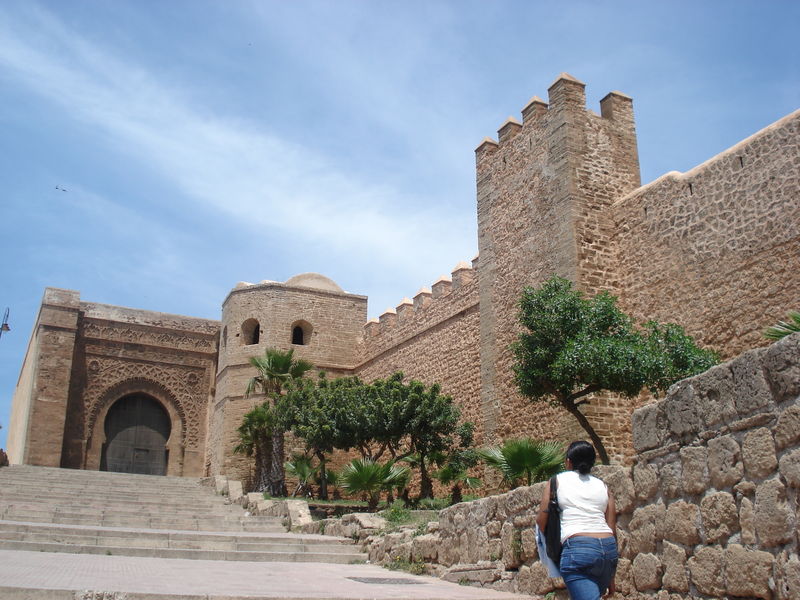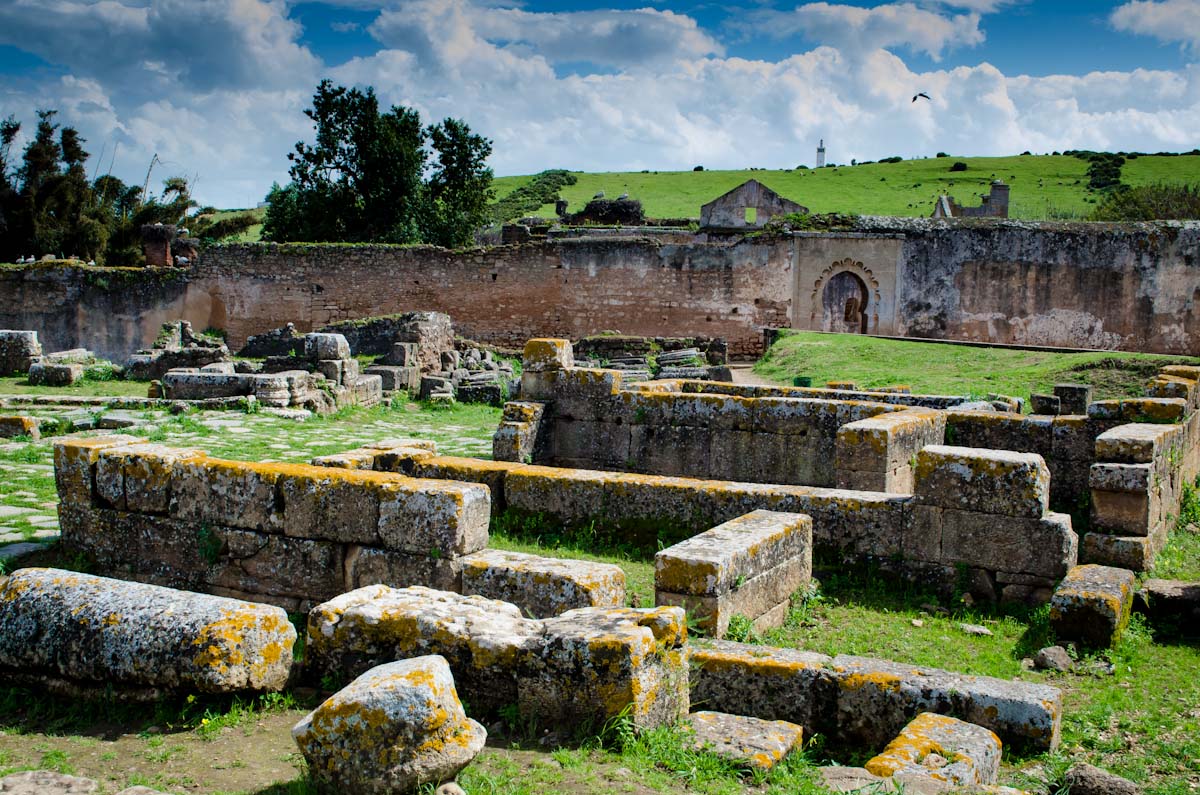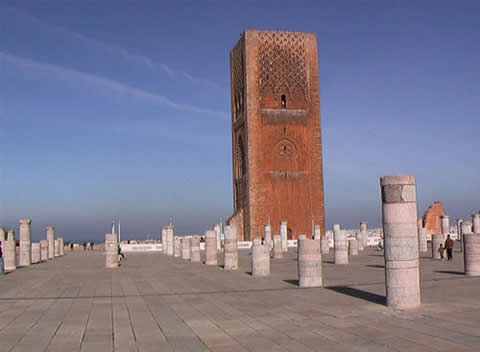It is an enclosure built in ocher-red carved stone, constructed in the 12 century by the Almohads. Formerly it was called "Mehdiya" and it was a sort of fortified convent, where religious soldiers departed to fight in the Holy War against the Christians of Spain. Later with the arrival of the Andalusians in the 17th century it was named "Kasbah Andaluse" until 1883 when the Arabs named it "Kasbah des Oudayas", the name by which he is known today. It is situated north of Rabat on the shores of the Atlantic Ocean and the mouth of the river Bou Regreg. It's like another city in Rabat, with narrow cobbled streets, the houses have few windows and walls are very wide. This is because they needed to be strong and resistant. The most characteristic are its blue and white walls.
The Walls of Rabat encircle and protect the Medina, the historic center of the city. If you decide to take a train there, go down Mohamed V Avenue, past the central post office, and you'll be at the walls in no time. You can see that they're building the first metro line in Morocco, which is a huge project that will connect Rabat Salé Bou Regreg across the river. The doors each have a different name, and were excavated gradually with the increase in traffic and the population. The first wall dates back to the Almohad dynasty in the late 12th century. It measures more than eight feet high and two feet deep. It's well preserved, before there was a single door, Bab Zaer, now it's Bab el Alou, Er Rouah Bab, Bab el Had.
The Hassan Tower is a famous landmark of Rabat. Sultan Yacoub El Mansour (twelfth century) plans to build the largest mosque in the Muslim world after the Samarra in Iraq. The work was abandoned after his death in 1199. The tower was peaking at over 60 m, but only reached 44 m. This site was chosen to build the Mausoleum of Mohammed V, where King Hassan II and his father are buried. His style is a masterpiece of traditional Moroccan art.





0 commentaires :
Enregistrer un commentaire